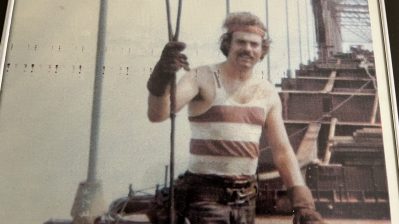Airlines eye turboprops to cut costs
TEXT OF STORY
Kai Ryssdal: Aviation’s not a fun business to be in right now. Not for companies that fly planes — witness the United news today — and not for the companies that make those planes — the big manufacturers Airbus and Boeing have both said they’re keeping a nervous eye on things.
But a Canadian train company is seeing some opportunities here. Yeah, a train company — Bombardier, it’s called. It also happens to be the world’s number three producer of commercial planes.
Today it announced quarterly profit more than tripled. The company said rising aircraft orders helped those numbers.
But many of the planes that’re selling best today were much more common years ago than they are now.
Ashley Milne-Tyte reports.
Ashley Milne-Tyte: The morning rush hour is just dying down at Westchester County Airport, 20 miles north of New York City. There are still several small planes waiting to depart, listening for instructions from the control tower.
[Radio traffic]: Left on Charlie and cross 11-29… With you… Panorama One…
One of the planes, destined for Boston, is a turboprop with two propellers. The pilot climbs aboard, starts the engine and sends a deafening noise through the air.
Over the past 10 years, airlines have been replacing propeller planes with small regional jets. Jets offer a faster, quieter and less bumpy ride.
John Starace is Westchester County Airport’s operations manager. He says most fliers prefer the sturdy look and feel of a small jet. Some quail when they spot propellers instead.
John Starace: We’ve had a few people that have walked out and they look and they look at their spouse and they say “No, no, I’m not getting on that plane. You mean I’m going on that?!” and then they get a little peaky, they get a little pale, maybe they want to faint.
No one’s likely to faint at the sight of the latest turboprops. They’re bigger for one thing. Most regional jets carry between 40 to 100 people. These new turboprops carry more than 70 passengers.
Continental put 74-seat turboprops on various short routes out of Newark this year. David Kinzelman heads corporate development for Continental. He says there was good reason to replace their regional jets…
David Kinzelman: I think per seat, we’re probably saving 30 percent.
He says it’s not just fuel savings that prompted the decision. The government caps flights in and out of the big New York area airports. Kinzelman says using the new, larger turboprops gives the airline an edge.
Kinzelman: This allows us to actually add capacity because in many cases we’re now flying the 74 seats in place of a 50-seat aircraft, so we’re actually able to grow the market with no more additional operations.
Despite those advantages, other big carriers say they’re not planning to switch to turboprops, although that could change. Micheline Maynard covers the airline industry for the New York Times.
Micheline Maynard: Jet fuel prices now are just under $4 a gallon and that’s up almost double from what it was a year ago and if these prices stay high, I think you’ll see a lot more airlines gravitate to orders for these new turboprop planes.
Orders have shot up recently. Canadian firm Bombardier is one of two companies left in the world that still makes turboprops. It manufactures the Q400 model that Continental flies. In 2006, airlines around the world ordered 24 of the planes. Last year, they ordered nearly four times that number.
Maynard says more Americans are likely to find themselves strapped into turboprops in the next few years.
Maynard: With the airlines pulling down service to cities, eliminating cities altogether, if this is the only way they can get there, I think they’ll be satisfied to fly them.
The new generation of turboprops certainly offers a more comfortable ride than the old ear-shattering bone shakers of the past, but safety concerns linger.
Last year, Scandinavian Airlines had a string of accidents involving the landing gear on its Q400 fleet. After an investigation, the airline ditched those particular aircraft. But since then, it has ordered more of the same planes.
In New York, I’m Ashley Milne-Tyte for Marketplace.
There’s a lot happening in the world. Through it all, Marketplace is here for you.
You rely on Marketplace to break down the world’s events and tell you how it affects you in a fact-based, approachable way. We rely on your financial support to keep making that possible.
Your donation today powers the independent journalism that you rely on. For just $5/month, you can help sustain Marketplace so we can keep reporting on the things that matter to you.


















